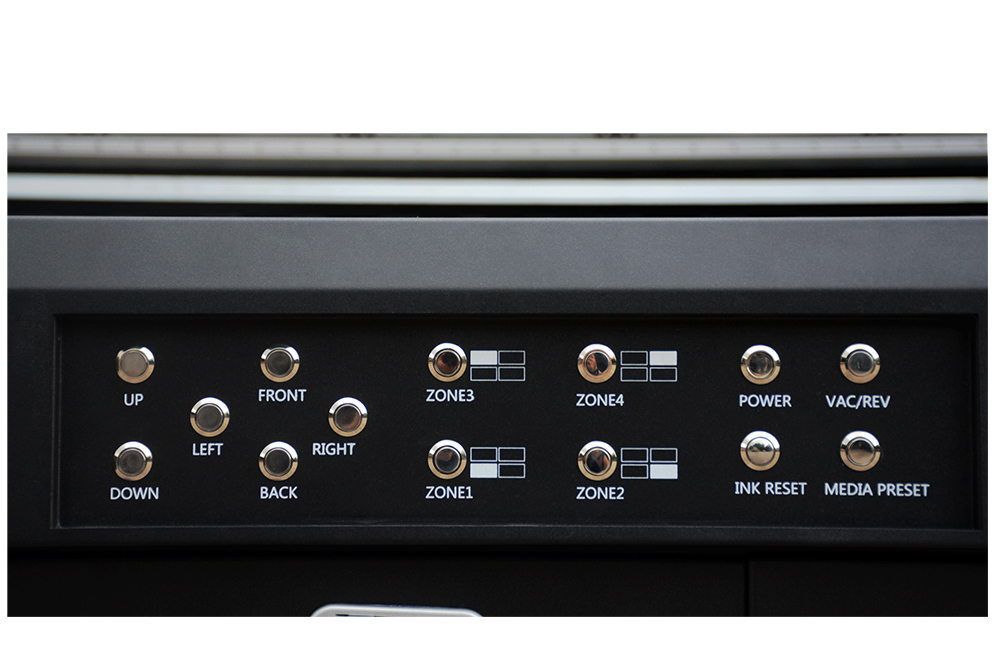How to Choose the Right Ink for Your UV Flatbed Printer?
How to Choose the Right Ink for Your UV Flatbed Printer?
In the realm of digital printing, UV flatbed printers have revolutionized the way we create vibrant, durable prints on a wide array of materials. From rigid substrates like glass, metal, and plastic to flexible ones such as leather and fabric, these printers offer unparalleled versatility. However, the key to achieving optimal print quality and longevity lies not just in the printer itself but also in the ink it uses. Choosing the right UV ink for your flatbed printer is crucial, as it directly impacts color accuracy, adhesion, cure speed, and the overall durability of the print. This article delves into the essential factors you need to consider when selecting UV ink for your flatbed printer.

**1. Understanding UV Inks
UV inks, or ultraviolet inks, are specially formulated to cure (dry) instantly when exposed to UV light. This curing process creates a hard, durable surface that is resistant to fading, scratching, and chemicals. UV inks are available in various formulations, each tailored for specific applications and substrates. They are generally classified based on their chemical composition:
UV-curable solvent inks: Offer good adhesion to non-porous materials and are known for their high gloss finish.
UV-curable water-based inks: Environmentally friendly, they provide excellent adhesion to porous and semi-porous materials.
UV-curable hybrid inks: Combine the benefits of both solvent and water-based inks, offering versatility across different substrates.
**2. Compatibility with Your Printer
Before exploring the ink market, ensure that the ink you choose is compatible with your printer’s specifications. Manufacturers often recommend specific ink brands or types that have been tested and optimized for their printers. Using incompatible inks can lead to printhead damage, reduced print quality, and even void your printer’s warranty. Always consult your printer’s user manual or contact the manufacturer for a list of approved inks.
**3. Substrate Compatibility
The substrate you intend to print on plays a pivotal role in determining the type of UV ink you should use. Different inks adhere better to certain materials than others. For instance, if you’re printing on glass or metal, a UV-curable solvent ink might be ideal due to its superior adhesion properties. Conversely, for printing on textiles or paper, a UV-curable water-based ink would be more suitable. Always test the ink on your specific substrate before committing to bulk printing to ensure optimal adhesion and durability.
**4. Color Gamut and Accuracy
Color gamut refers to the range of colors an ink can produce. When selecting UV ink, consider its ability to accurately reproduce the colors you need for your projects. High-quality inks offer a broader color gamut, allowing for more vibrant and accurate prints. Look for inks that use advanced pigment technology for better color saturation and lightfastness. Additionally, consider the ink’s opacity, as this affects how well it covers the substrate and how colors blend.
**5. Cure Speed and Efficiency
Cure speed is a critical factor, especially in high-volume printing environments. It determines how quickly the ink dries and becomes fully cured after exposure to UV light. Faster cure speeds translate to shorter production times and increased efficiency. However, it’s essential to balance cure speed with print quality and adhesion. Some inks may cure rapidly but compromise on these aspects. Always test the ink’s cure speed and its impact on print quality before making a decision.
**6. Durability and Resistance
The durability of UV ink is a significant advantage over traditional inks. Consider the level of resistance you need against factors such as fading, scratching, chemicals, and weathering. For outdoor applications or products subject to wear and tear, choose inks with enhanced durability characteristics. UV inks with ceramic-like properties offer exceptional resistance to abrasion and chemicals, making them suitable for demanding applications.
**7. Environmental Considerations
As environmental concerns grow, opting for eco-friendly UV inks becomes imperative. Water-based UV inks are generally more environmentally friendly than solvent-based ones, as they contain fewer volatile organic compounds (VOCs). Look for inks that are certified by recognized environmental standards, such as GREENGUARD or EcoPassport, to ensure you’re making a sustainable choice.
**8. Cost-Effectiveness
While it’s crucial to invest in high-quality UV ink for optimal results, cost-effectiveness is also a practical consideration. Compare the cost per liter or square meter of different inks, factoring in their durability, cure speed, and print quality. Remember that cheaper inks might seem attractive initially but could lead to higher costs in the long run due to increased ink consumption, reduced print quality, or frequent printer maintenance.
**9. Testing and Sampling
Before committing to a specific UV ink, request samples from the manufacturer or supplier. Test the ink on your printer and substrates to evaluate its performance in terms of color accuracy, adhesion, cure speed, and durability. This hands-on experience will give you a clear understanding of whether the ink meets your requirements.
**10. Technical Support and Service
Lastly, consider the level of technical support and service provided by the ink manufacturer or supplier. A reliable supplier should offer comprehensive product information, technical assistance, and ongoing support. They should also be able to provide guidance on ink storage, handling, and best practices for achieving optimal print results.
In conclusion, selecting the right UV ink for your flatbed printer is a multifaceted decision that involves understanding your printer’s specifications, substrate compatibility, color requirements, cure speed, durability needs, environmental impact, cost-effectiveness, and the level of support provided by the ink supplier. By carefully evaluating these factors and conducting thorough testing, you can ensure that your choice of UV ink aligns with your printing needs, delivers exceptional print quality, and contributes to the long-term success of your printing projects.
